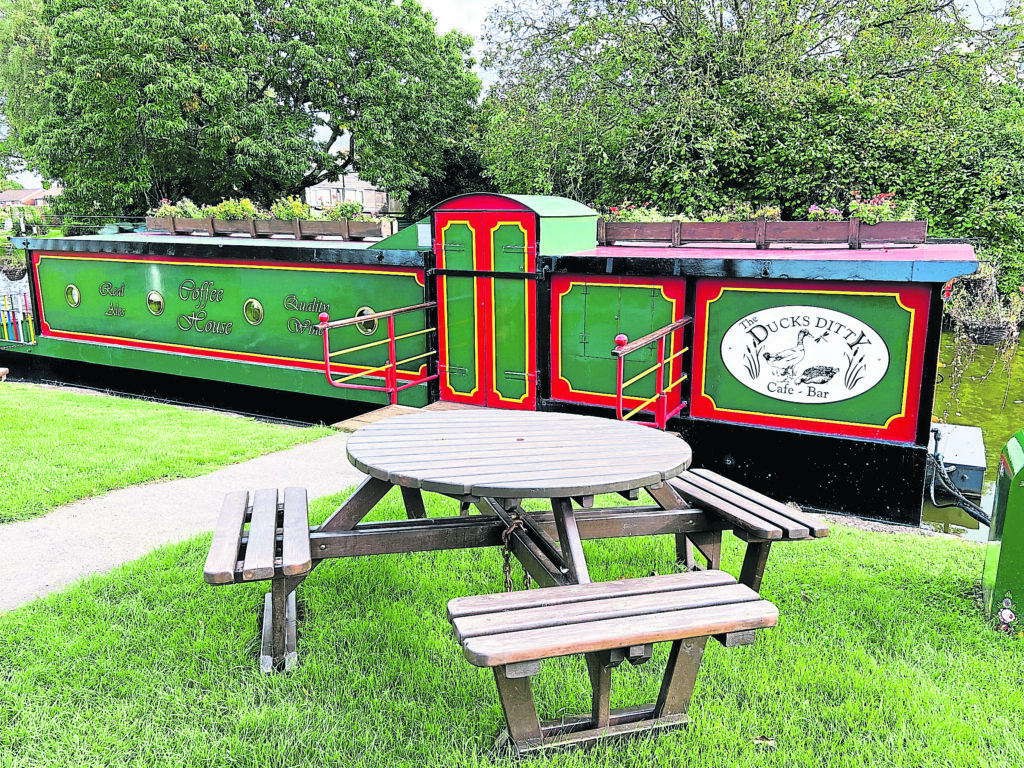Nicola Lisle explores the history and wildlife of the Grand Western Canal at the Visitor Centre in Tiverton
THIS year marks the 50th anniversary of the reopening of the Grand Western Canal to boat traffic, and also of the formation of the Tiverton Canal Company. Today this lovely stretch of canal is a country park and nature reserve, just waiting to be explored by foot, bicycle or boat.

The triumphant reopening in 1974 came just three years after the canal was purchased by Devon County Council, following a long-fought campaign by locals to save the canal from decades of neglect.
The canal basin at Tiverton is a good place to start exploring the canal. At its heart is the Grand Western Canal Visitor Centre, which was officially opened in 2013 by the Honiton-born Olympic athlete Jo Pavey. Here you can discover the canal’s 200-year history and find out about its rich abundance of wildlife through information boards, interactive displays, models, canal artefacts, photographs, plans, film and games.
Immediately catching the eye as you enter is a life-size model of a horse pulling a cart, the latter a relic from the Bridgwater and Taunton Canal in Somerset where it would have been used for hauling heavy goods and tools used for canal repairs and maintenance.
Information boards and a time-line give a detailed account of the canal’s history. Originally proposed by renowned canal engineer James Brindley in 1769, and revived in 1792 with John Rennie at the helm, the Grand Western Canal sadly never fulfilled Brindley’s original vision of linking the Bristol and English channels, which would have enabled ships to avoid sailing around the hazardous coastlines of Devon and Cornwall.

The construction of the first 11.25 miles, from Tiverton to Lowdwells, was plagued with problems. Costs mounted as progress was considerably hindered by the hard rock of Devon’s hilly landscape. In April 1811, navvies rioted over unpaid wages. By the time the canal opened, the original cost of £220,000 had rocketed to £244,500.
An extension to Taunton – initially masterminded by engineer James Green – was beset with similar problems, and Green’s ambitious plans to include seven boat lifts and an inclined plane proved disastrous and costly. Green was replaced with W A Provis, and the extension finally opened in 1838, with the original budget of £61,000 having risen to £80,000.
The canal, now 29.25 miles long, enjoyed a brief period of prosperity, drawing a steady income from tolls from the regular flow of boats carrying cargoes of coal and limestone to the lime kilns at Tiverton.
In 1848, Isambard Kingdom Brunel sounded the canal’s death knell when he brought his Bristol and Exeter Railway to Tiverton. Within 20 years most of the commercial traffic on the canal had ceased, and the Bristol and Exeter Railway Company bought the canal in 1864 for £30,000. Cargoes into Tiverton limped on for a few more years, finally ending in the 1890s.

By 1960 the canal was in a serious state of decline, but a campaign by the local community to restore the canal led to extensive restoration and maintenance under the ownership of Devon County Council.
The canal today is a treasure trove of wildlife, so it’s worth checking out the large display boards in the visitor centre detailing the animals, birds and flowers that you might spot along the towpath. The rich variety of wildlife along the canal led to its designation as a Local Nature Reserve in 2005.
Outside the visitor centre is a children’s play park, boats and kayaks for hire, picnic tables, cafes, a gift shop, display boards and details of local news and events. Look out for Rosie – a beautiful swan created by artist Lauren Brinsden-Miles, featuring the traditional Roses and Castles design.
For something really special, take a trip aboard Tivertonian, one of the few horse-drawn barges left in the UK. Boat trips run from April to October. For more info: www.tivertoncanal.co.uk
Visitor information:
Tiverton Canal Visitor Centre, Canal Hill, Tiverton, Devon EX16 4HX
uk/grandwesterncanal/visitor-information-2/visitor-centre
Visitor centre open daily 9.30am-4.30pm
Admission free, pay and display car park nearby (cash only)





